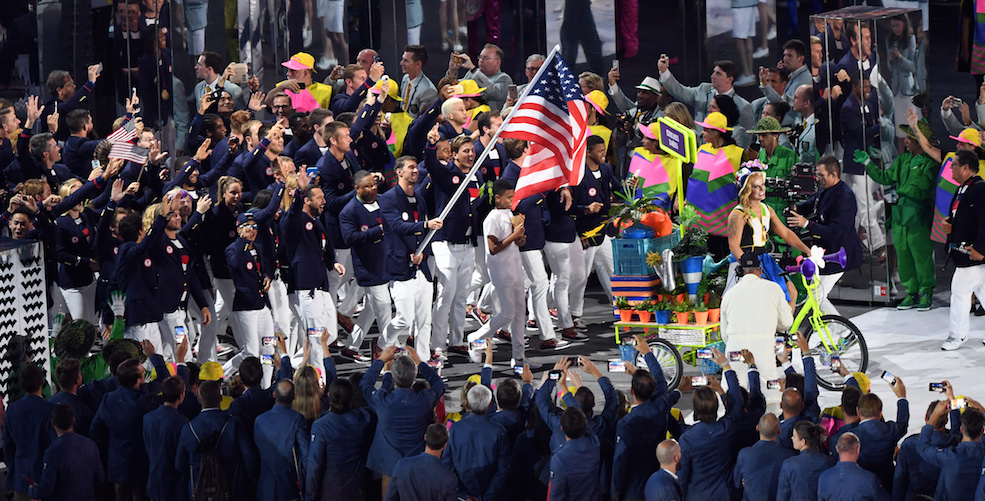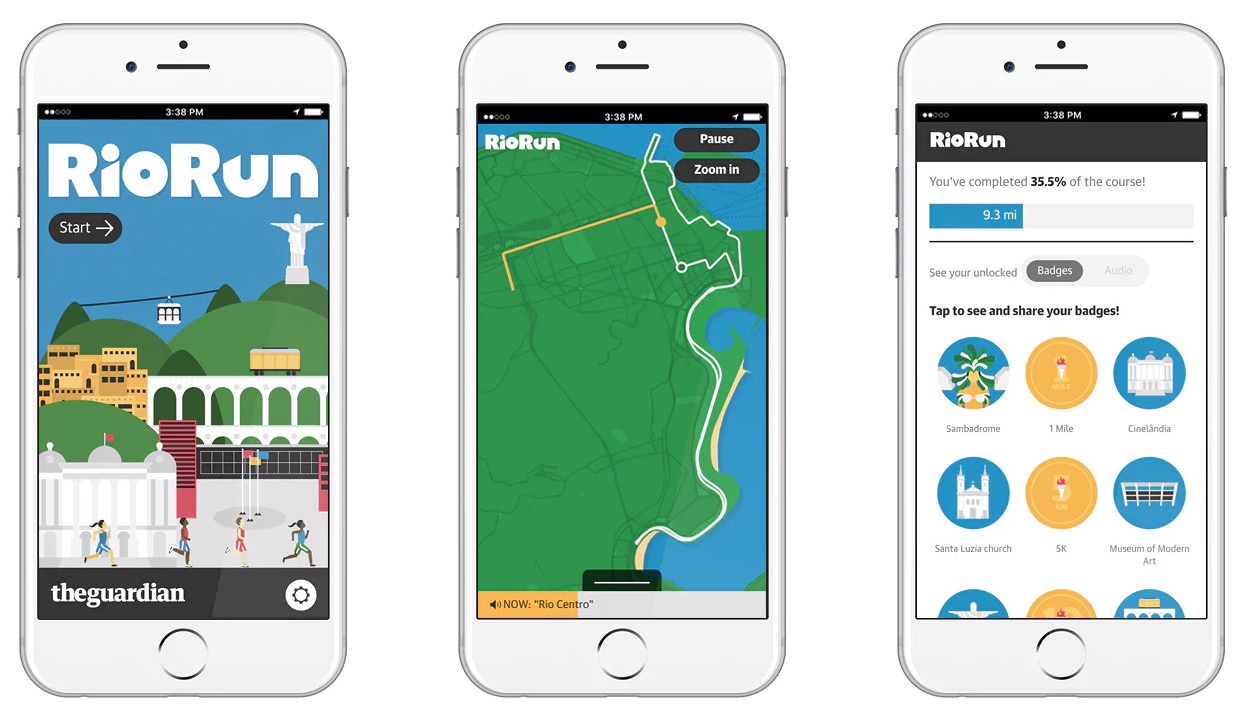
The Olympics are, like the quadrennial U.S. presidential election, the perfect opportunity for news organizations to experiment with new ways to present news online. The Games are a massive story, but the stakes are typically relatively low, and, perhaps most importantly, the date of the event is known years ahead of time. As a result, outlets have plenty of time to plan coverage and build out interactives.
“A lot of the more ambitious projects we do for this type of coverage we do months and months before the actual event,” New York Times sports editor Jason Stallman told me in 2014. (We were discussing the Times’ coverage of the 2014 World Cup, but the principle holds for the Olympics.)He continued: “It’s to try and offer as much variety as possible, understanding that for an event like this you have a lot of different people coming at it from a lot of different perspectives, and experiences, and interests — so variety is key.”
With that in mind, and with the Rio Games well underway — I’m watching Brazil and Japan play in the women’s rugby ninth-place match as I type this — we decided to compile a list of some of the coolest digital news experiments around the Olympics.
The list is by no means complete, so please let us know (in the comments or on Twitter) what we’ve missed. We’ll be updating the list throughout the Olympics. (Updated Aug. 15)
How Bolt won: Usain Bolt won his third consecutive gold medal in the 100 meter sprint on Sunday, finishing the race in (a comparatively slow) 9.81 seconds. The Jamaican fell behind from the start, but he ultimately took the lead around the 60-meter mark. To show how Bolt overtook the competition and won the race, the Times created a mobile-friendly panoramic graphic that shows a second-by-second breakdown of the race.

On mobile and desktop, users can scroll through the shot to see how the race progressed, and in many ways it tells the story of Bolt’s win in a more concise and straightforward way than a traditional 700-word article.
Over the next three weeks, deputy sports editor Sam Manchester, one of dozens of Times reporters reporting from Brazil, will send readers periodic updates from the games. These won’t be generic news alerts, though. Manchester plans to give each of the 3 to 4 daily updates a personal touch, opting for smartphone snapshots, GIFs, emoji, and the kind personal tone people expect from texting.
THIS is so good. I love how it’s not an article and not a video and not a listicle. It’s in between. https://t.co/WR6MIMCjNl
— Farhad Manjoo (@fmanjoo) August 5, 2016
A look at what makes Simone Biles the world's best gymnast. Click and enjoy the show. https://t.co/J3UBeUT6A2 pic.twitter.com/qyxeqBQeCi
— NYT Sports (@NYTSports) August 6, 2016
Don't know what Infiniti paid for NYT Olympic preview (7 figures for sure) but bet they're happy they did. Way cool. https://t.co/7BFXlkzyDM
— Peter Kafka (@pkafka) August 6, 2016
Yo. The NYT's interactive profiles on Olympic athletes are the coolest things on the internet right now https://t.co/4eo31aAszC
— Cocky McSwagsalot (@MoreAndAgain) August 6, 2016
That was no bother for the Times. The paper’s graphics desk found new ways to illustrate the competitions with GIFs:
Katie Ledecky crushed her own World Record in the 400-meter freestyle – here's our recap. https://t.co/vu2xbjLNTB pic.twitter.com/UJKnYKJKgh
— NYT Graphics (@nytgraphics) August 8, 2016
The U.S. won the 4×100 relay, giving Michael Phelps his 19th Olympic gold medal. Details: https://t.co/FtKcXENjRQ pic.twitter.com/7Pc45PPUf1
— NYT Graphics (@nytgraphics) August 8, 2016
Here are more details from Poynter:
Heliograf, a tool developed by The Washington Post’s engineering team, will use data and language templates to generate automatic briefs on medal tallies, event schedules and competition results for the 2016 Olympic Games in Rio. Those briefs will be fed into The Washington Post’s main Olympics liveblog, which will also be home to stories written by the newspaper’s sports reporters.
The updates will also be shared by The Washington Post’s Twitter bot, @WPOlympicsbot, its Facebook Messenger bot and accessible on Alexa-enabled devices.
First Heliograf tweet! https://t.co/igBG3w3atZ
— Jeremy Gilbert (@jeremygilbert) August 6, 2016
Pizza box as measuring unit! 🍕 Tasty #Rio2016 infographic by @PostGraphics https://t.co/uI5Qlo2Xg1
— Benjamin K. Shown (@benkshown) August 8, 2016
Nice use of scroll to reveal and compare size, by @washingtonpost https://t.co/MCYfLSAZ6m
— Alex Tait (@taitmaps) August 8, 2016
I signed up to get alerts when Kazakhstan won any medal. The Kazakhs have won a surprising number of medals so far! https://t.co/VbmAr0MODR
— Joseph Lichterman (@ylichterman) August 8, 2016
@ylichterman @NiemanLab @GdnMobileLab KAZ left London with 7 gold, 1 silver, and 5 bronze, finishing twelfth in the overall medal standings.
— Kazakh Embassy D.C. (@KazakhEmbassy) August 8, 2016
Here’s what the Mobile Innovation Lab is trying to figure out:
— How people respond to web notifications that last more than 1-2 days
— How people interact with a fairly complex signup page for notifications
— How to create individual alert subscriptions on-the-fly for multiple countries
— If the morale meter encourages people to follow our event-based live blogs
— If people enjoy taking a quiz through notifications
We’ll take you on a virtual audio tour of Rio from wherever you are, following the route of the 2016 Olympic marathon. What you hear will depend on how far you run and how fast. Your distance will unlock new audio segments at key moments along the marathon route, so the further you go, the more you’ll discover.

The Armchair Olympian game lets users test their timing in skills related to sprinting, rowing, and the long jump. Archery and synchronized swimming games are yet to come.
Sorry for keeping you from doing anything productive today. Be an armchair Olympian: https://t.co/eczOLngKyY pic.twitter.com/5FHxKbOeNB
— Julia Wolfe (@juruwolfe) August 4, 2016
Hold up. Did the Wall Street Journal really make…a bunch of fun mini games? https://t.co/tx0IIGmZKy pic.twitter.com/covIbq2V4k
— Kaleigh Rogers (@KaleighRogers) August 4, 2016
Love these Olympic minigames by @stuartathompson. Great way to explore facts about the athletes. Also, I'm slowhttps://t.co/65KBFmWLXd
— ☔️ Aaron Williams ☔️ (@aboutaaron) August 4, 2016
This @stuartathompson / @maxacohen / @jessiekuronen piece rules. Only request: how are other quiztakers performing?https://t.co/U1RIBIH88z
— Tyler Fisher (@tylrfishr) August 4, 2016
@tylrfishr Yeah totally. That was part of the original mocks, I just kind of ran out of time. pic.twitter.com/6FQ6TAmCtX
— Stuart A. Thompson (@stuartathompson) August 4, 2016